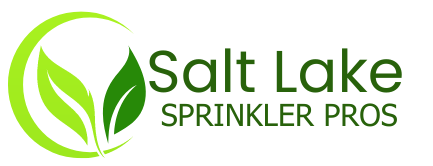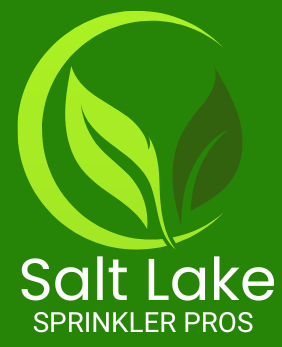Backflow Preventer Installation Salt Lake City Utah
Backflow Preventer
Installation & Upgrades
Backflow preventer installation is a standard part of sprinkler systems we install. We are experts at right sizing the appropriate backflow preventer for your irrigation system’s requirements and can assist in replacing or upgrading our backflow preventer when required.
Backflow Preventer Installation
Backflow preventers constitute a critical part of an irrigation system and a standard component of all sprinkler systems we install. Right-sizing the backflow preventer to the specific requirements of your sprinkler system is something we excel at. There are backflow preventers that are designed for much more high risk irrigation systems than most residential sprinkler systems and would be overkill. Likewise, it’s critical for us as a system installer to recognize where there is risk of backflow, and particularly if there is a cross connection, to ensure the backflow preventer is able to provide the requisite protection. We’re experts at irrigation system design and will make sure the backflow preventer we install is right for your system’s conditions.
GET BACKFLOW PREVENTER SERVICE
Sprinkler Leads Form
Thank you for contacting Salt Lake Sprinkler Pros.
We will contact you to you as quickly as possible, or for immediate service, please feel free to call us at (385) 217 4551.
Oops, there was an error sending your message.
Please try again or call (385) 217-4551 for an immediate response.
Backflow Preventers and How it Protects Your Sprinkler System
Backflow refers to the reversal of the flow of water in a sprinkler system, caused by conditions of gravity, vacuum or other pressure changes, and resulting in the contamination of the water supply with chemicals, gasses and human waste.
There are two primary factors involved in situations where there is a reversal of the flow in your sprinkler system, referred to as backsiphonage and backpressure.
Backsiphonage occurs when there is negative pressure on the supply pipes, which causes downstream substances to be sucked into the water supply. Backsiphonage is usually the result of pipes that are too small, relative to the system needs, cracks or other breaks in the pipes, or high withdrawal rates, which can create the vacuum effect backsiphonage is known for.
Backpressure occurs when the pressure in the downstream pipes is higher than at the point of supply, resulting in downstream irrigation water mixed with pollutants to be pushed into the drinking water supply. Backpressure is generally the result of pumps, thermal expansion or downstream piping running at an elevation above the source.
Backflow preventers are required and critically important in instances where your irrigation system entails what’s called a “cross-connection”, which refers to a point in the irrigation system that could allow contaminated irrigation water to mix with the drinking water supply.
Types of Backflow Preventers:
Most common irrigation system backflow assemblies are listed below:
List of Services
-
Atmospheric Vacuum BreakerItem Link List Item 1
The simplest and least expensive backflow preventer suitable for most residential sprinkler systems. It is self draining and has very low maintenance requirements, though it is not suitable for backflow prevention in many circumstances, including scenarios of continuous water pressure. This backflow preventer does not need to be tested annually.
-
Pressurized Vacuum BreakerItem Link List Item 2
The PVB is an evolution of the AVB, intended to allow for scenarios of continuous water pressure. Requires proper conditions to work, including the ability to be placed several inches higher than all subsequent system components, as well as there being no further down-line valves, nor any back pressure, as they are designed only to protect against backsiphonage, but not backpressure. PVBs must be tested annually by a certified backflow preventer tester.
-
Reduced Pressure ZoneItem Link List Item 3
the PRZ represents the best protection, protecting against both backpressure as well as backsiphonage. This type of backflow preventer is required when there’s a risk of cross contamination with the city water supply, and in continuous pressure applications. RPZ assemblies are frequently used in commercial systems. RPZ assemblies must be tested annually by a certified backflow preventer tester.
-
Double Check Valve AssemblyItem Link List Item 4
The D backflow preventer is no longer allowed to be installed under current code, but can be maintained if it was installed under the previous code. It was used to protect from backflow situations where there is a low hazard of cross contamination with drinking water or continuous pressure applications. It must be tested annually by a certified tester.
All backflow prevention assemblies require testing within 10 days of installation. By federal and state law, backflow prevention assemblies must be tested annually by an authorized tester.
When we
design your irrigation system, we ensure the system adequately protects against backflow, and the functionality requirements of the appropriate backflow preventer are implemented appropriately.
We’re happy to explain and answer any questions you may have. Call us today!
Need immediate backflow preventer service?
We're available 24-hours a day, 7 days a week.
We provide Backflow Preventer Installation Services in the following cities & neighborhoods in the Salt Lake City Utah Area
Salt Lake City
Sugarhouse
Avenues
Yalecrest / Harvard Yale
East Bench / St Marys
Sunnyside
Bonneville Hills
Wasatch Hollow
Capital Hill
Westpointe
Downtown
Central City
East Central
Ballpark
Fairpark
Liberty Wells
Holladay
Millcreek
Murray
Sandy
Draper
Canyon Rim
Zions Park
Olympus Cove
Cottonwood Heights
South Salt Lake
Oakdale
Jamestown
Wildwood
Smithfield
Alta Vista
Little Cottonwood Creek Valley
Park City
Jeremy Ranch
Summit Park
Midway
Heber City
Silver Summit
Snyderville
West Valley City
West Jordan
South Jordan
Herriman
Bluffdale
Magna
Glendale
Rose Park
Jordan Meadows
Poplar Grove
Fairpark
Taylorsville
Kearns
Oquirrh
Riverton
Daybreak
(385) 217-4551
service@saltlakecitysprinkler.com
saltlakesprinkler@gmail.com
824 S 500 W
Salt Lake City, Utah 84101
All Rights Reserved | Privacy Policy | Sitemap | Salt Lake City Sprinkler Repair & Installation Pros

